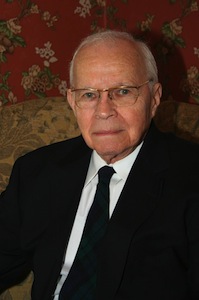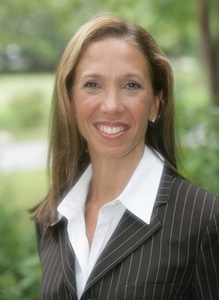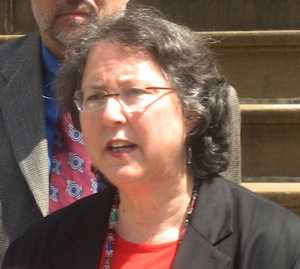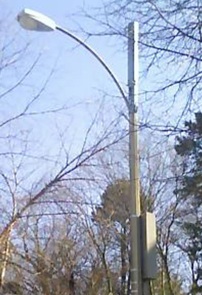Goodbye to Scarsdale
- Details
- Hits: 3843
 The following was submitted to Scarsdale10583 by Harry Reynolds who ran for Scarsdale Village Trustee as an independent candidate in March, 2012: Resignation to one’s fate takes practice. My fate today is answering last week’s soporific article by the Non Partisan trio of Dan Hochvert, Bill Kay, and Bruce Wells, three genuinely good hearted men who have the cult-like belief that secrecy is a “term [that ] does not apply” to the Non Partisan party. They claim that potential candidates are diligently vetted, are not asked about any issues because where they stand can only be learned after they take office, and that “relatively little in the party’s procedure is confidential”. They do not say what drives them to appear on stage now, a month after the election, to make their bold, outrageously false claim that there is no secrecy in their party.
The following was submitted to Scarsdale10583 by Harry Reynolds who ran for Scarsdale Village Trustee as an independent candidate in March, 2012: Resignation to one’s fate takes practice. My fate today is answering last week’s soporific article by the Non Partisan trio of Dan Hochvert, Bill Kay, and Bruce Wells, three genuinely good hearted men who have the cult-like belief that secrecy is a “term [that ] does not apply” to the Non Partisan party. They claim that potential candidates are diligently vetted, are not asked about any issues because where they stand can only be learned after they take office, and that “relatively little in the party’s procedure is confidential”. They do not say what drives them to appear on stage now, a month after the election, to make their bold, outrageously false claim that there is no secrecy in their party.
When in March I ran for Trustee, the Non Partisan party, including the Non Partisan trio, did not answer my argument that the party keeps secret the identities of persons seeking its nominations to elective office and that it keeps secret what is said when those applicants appear before the nominating committee where neither the applicant nor the committee itself may discuss any issues. The Non Partisan party is the only party on earth that has no core political belief and no issues of any kind. Their nomination committee’s object is to divine from the aura given off by the applicant’s history whether she is fit to be a mayor or trustee in an uncontested election in which she will neither campaign, nor make promises, nor raise or debate any issues. According to the Non Partisan party, this is “representative government in its purest and most democratic form”, notwithstanding that its total lack of transparency leaves Scarsdale’s citizens to walk around its electoral process like unemployed extras on a movie lot.
The Non Partisan trio’s article did not tell you that they defend its secrecy about the identity of applicants on the ground that applicants would fear embarrassment should the public learn that they had not been nominated. I attacked that kindergarten defense because the public’s supervening right to know who were rejected is necessary for it to determine the integrity and judgment of the nominating committee. It enables the public to see whether the party has discriminated against anyone or has manipulated the system for the advancement of the interests of individuals within the system. For example, are you aware that out of at least 17,000 residents in the village two of the present trustees are marital partners of persons actively engaged in the Non Partisan system? Ask the Non Partisan trio how that came about and you will be told that it is a secret. Ask them how it was that David Lee was nominated as trustee when the published descriptions of Robert Selvaggio and David Lee show, in what must be the opinion of many, that Selvaggio was unquestionably the superior applicant. They will say that that, too, is a secret.
Last, and this is the big kicker, the Non Partisan system, including the Non Partisan trio, requires you to accept their party’s belief that you should not be told what a prospective trustee or mayor knows, thinks, believes, plans, or desires concerning issues directly affecting your lives and those of your children. Is that secrecy proof of a “representative government in its purest and most democratic form” or is it a fascist’s dream? Indeed, is it not the most harebrained belief that you will find in any electoral system in the West? What did the Non Partisan candidates answer in March when confronted by it? Nada, niente, klum, nothing. When Non Partisan candidates run in elections, they run with their heads kept very low.
After much reflection, we have decided to leave Scarsdale, but without leaving it. How so?
Our organization, relying upon Village Law, § 9-912 plans to propose this winter a change in the name of Scarsdale. Until that time, our organization will be at large in the village soliciting proposed names from residents who oppose the Non Partisan party’s practice of governance by secrecy. We will invite our ingenious high school students to join the search. Surely, they constitute a well, if not a pit, for names for our wonderful village to whom they owe so much for their expensive educations. As a public service, of course, we will disclose periodically the names variously proposed for our village, names selected in the main by our temperate citizens in good taste.
Is the CNC Nominating Process Too Secretive?
- Details
- Hits: 3392
 The following piece was submitted by the last three chairs of the Scarsdale Citizens Nominating Committee, Bill Kay, Bruce Wells and Dan Hochvert. There have been a number of references to "secrecy" in opinion pieces in the Scarsdale Inquirer, in advertisements and on websites in connection with the Citizens Non-Partisan Committee's (CNC) procedure for selecting the Scarsdale Citizens' Non-Partisan Party's (Party) candidates for Village office. To our minds that term does not apply, but rather there seems to be a lack of understanding, perhaps related to inadequate publicity, of the details of how the CNC members determine which candidates they think will best serve all citizens of our Village.
The following piece was submitted by the last three chairs of the Scarsdale Citizens Nominating Committee, Bill Kay, Bruce Wells and Dan Hochvert. There have been a number of references to "secrecy" in opinion pieces in the Scarsdale Inquirer, in advertisements and on websites in connection with the Citizens Non-Partisan Committee's (CNC) procedure for selecting the Scarsdale Citizens' Non-Partisan Party's (Party) candidates for Village office. To our minds that term does not apply, but rather there seems to be a lack of understanding, perhaps related to inadequate publicity, of the details of how the CNC members determine which candidates they think will best serve all citizens of our Village.
Before elaborating on the workings of the CNC, perhaps it is helpful to recollect that in the early 20th century partisan politics became so fierce that it was difficult for residents to work together to make Scarsdale a better place. Fortunately a group of public-spirited people decided that improving Scarsdale was more important than partisan politics and that gave birth to today's non-partisan system. The procedure for selecting the Party's candidates for Village office has been modified by public referendum many times as things changed over the years, and it has identified people who are solely focused on helping Scarsdale to continue to be a great place to live, not on promises they would have to make to secure citizens' votes.
We believe that the Scarsdale public would benefit from a better understanding of how the CNC does its work. Each year the CNC reviews the previous year's Rules of Procedure and modifies them if appropriate. Those Rules were added to the Procedure Committee's website in January of this year but only passing reference was made to their availability in publications and on websites. They are still there and will remain posted, along with any changes approved by subsequent CNCs. Thus, there is transparency as to the Rules, but more publicity as to their availability is needed.
Another area of the selection process that may not be well understood is that each potential candidate is given the same five questions to address before the CNC, which although they have not broadly been publicized, they are certainly not "secret". Rather than being directed at specific issues such as zoning or development, these questions focus on the level of experience, and commitment to Village activities such as "Can you commit the time needed to do the work of the position?" and "What previous work that you have done are you proud of?". The potential candidates are given 10 minutes to speak to the questions at a CNC meeting and the CNC members do not ask the potential candidates any questions. Despite the non-specific and open-ended nature of the questions, and to dispel even the appearance of secrecy in the CNC deliberations, the next CNC may choose to have the questions posted on the Procedure Committee website.
There has been concern expressed regarding where candidates stand on issues. It is around this particular concern that we think the term "secrecy" has been misused. It is true that CNC members are not able to ask the potential candidates questions about issues, but that is because history has taught us that the very essence of a non-partisan candidate's position is to NOT take a position on an issue until all the information that can be gathered on any issue is available for consideration. Some of the important qualities that CNC members have historically sought in evaluating the potential candidates for a Village position are that the candidate be open-minded, thoughtful and a good listener. Asking a potential candidate about his or her position on taxes may be satisfying but it may bear little application to the situation in which Trustees may find themselves when confronted with uncontrollably rising pension costs and limited ways to pay for such expenses mandated by other levels of government, most often New York State.
In determining which potential candidates should be nominated for the Non-Partisan Party slate, CNC members conduct due diligence among people in the community. Specifically, the CNC members contact people who have worked with candidates or are their neighbors and the information received through this effort is shared with the entire CNC. No comments are shared with the members unless the individual making the comment is willing to attribute the comment to himself or herself. This prevents gossip, rumor or innuendo from running rampant since other CNC members can then conduct fact-checking as to any such statements. We believe that this part of the procedure must remain confidential so that people who are contacted will speak openly and frankly regarding potential candidates.
The CNC historically has not publicized the names of potential nominees who are considered and not selected. This has been considered a number of times by the CNCs and it was decided each time it came up that publicizing the names of candidates that were considered and not selected might result in fewer people agreeing to be considered by the CNC for Village office in the future. Although the CNC has chosen not to publicize these names, there is no CNC rule that would restrict potential candidates who were not nominated from sharing that result publicly, as has been done from time to time.
The bottom line is that relatively little in the Party's procedure is confidential and we believe that a greater effort to share with the public information regarding the procedures and rules governing the process will be well received . The objective of the non-partisan process followed in Scarsdale is to create an environment that draws on the best and most talented volunteers to govern the Village. This process has repeatedly proven, over time, to produce excellent results in Village Boards and Justices that served our Village well without regard to partisan politics - a tradition of which the CNCs are justly proud.
Redistricting: What You Should Know at the Scarsdale Forum
- Details
- Hits: 2722

On Thursday, April 26th the Scarsdale Forum will hold a reception honoring the members of the 2011 Procedure Committee and the 2012 Citizens Nominating Committee at 7:30 p.m. followed by a presentation from New York State Assemblywoman Amy R. Paulin who will speak on “State of the State.”

For program and membership information, visit www.ScarsdaleForum.com , e-mail office@scarsdaleforum.com or call 914-723-2829.
(Pictured at Top: State Assemblywoman Amy Paulin)
Letter: Why You Should Oppose DAS in Scarsdale Neighborhoods
- Details
- Hits: 4649
 Here is a letter from Scarsdale resident and concerned parent Marjorie Rosenblatt on the proposal to install distributed antenna systems in Scarsdale neighborhoods: I consider Scarsdale an educated and forward-thinking town, and as such, I cannot understand how we, as a community, are not vehemently opposing the plan to allow placement of distributed antenna systems (DAS) in our neighborhoods. Perhaps the community does not realize that NextG has requested that the Village amend the Village Code to permit the operation of DAS technology in the Village right-of-way. This involves distributed antenna systems in 15 neighborhood locations around Scarsdale; I feel strongly that Scarsdale should resist this plan; our first step should be to attend the Planning Board work session on the proposed zoning code amendment on May 7, 2012 at 7:30 pm in the third floor meeting Room in Village Hall.
Here is a letter from Scarsdale resident and concerned parent Marjorie Rosenblatt on the proposal to install distributed antenna systems in Scarsdale neighborhoods: I consider Scarsdale an educated and forward-thinking town, and as such, I cannot understand how we, as a community, are not vehemently opposing the plan to allow placement of distributed antenna systems (DAS) in our neighborhoods. Perhaps the community does not realize that NextG has requested that the Village amend the Village Code to permit the operation of DAS technology in the Village right-of-way. This involves distributed antenna systems in 15 neighborhood locations around Scarsdale; I feel strongly that Scarsdale should resist this plan; our first step should be to attend the Planning Board work session on the proposed zoning code amendment on May 7, 2012 at 7:30 pm in the third floor meeting Room in Village Hall.
There is clearly conflicting information available to support whatever perspective one chooses with regard to the safety of exposure to non-ionizing radiation, as is transmitted by a DAS. Suggesting that there is no definitive proof of increased malignancy as a result of RF transmitter exposure is dramatically different from stating that it is definitely not harmful. I personally would prefer to err on the side of caution; history is littered with mistaken assumptions resulting in unfortunate medical outcomes– thalidomide, estrogen replacement therapy, cigarettes, to name a few. The cost of increased incidence of malignancy in our children is too great when weighed against better cell phone reception and financial reward for NextG. All members of the Scarsdale community with whom I have spoken to date share this view.
An FCC website reports:
"At a given cell site, the total RF power that could be radiated by the antennas depends on the number of radio channels (transmitters) installed, the power of each transmitter, and the type of antenna. While it is theoretically possible for cell sites to radiate at very high power levels, the maximum power radiated in any direction USUALLY does not exceed 50 watts."
Moreover, the International Agency for Research on Cancer (IARC), a component of the World Health Organization, has recently classified radiofrequency fields as "possibly carcinogenic to humans."
Additionally, the proposed concept that we are already exposed to non-ionizing radiation so a bit more does not significantly matter, is ignorant and shortsighted. Radiation exposure, ionizing or non, should be limited to that which is necessary. BOTH have resultant tissue changes (non-ionizing radiation has clearly been documented to increase temperature in the adjacent tissues, and to increase glucose metabolism in the brain).
I believe that our local government should actively try to prevent something that most of prefer not occur. Other communities are vigorously opposing placement of these transmitters in neighborhoods (Greenburgh, for example) and waging battles in court. We may not be able to afford to be complacent – it would be tragic were we, years from now, to discover that these devices are in fact harmful, when the damage has already been done.
I pose the following questions:
1. I discourage my children from using their cell phones because of potential risk of increased malignancy with RF exposure, as suggested by many experts, both medical and otherwise. Why would we not try to prevent additional exposure? Is it not bad enough that one of these transmitters is currently placed directly across the road from Quaker Ridge School? Do we continuous exposure for our children at home as well?
2. How much output will there be from the DAS in question as compared to the existing cell towers, which are purposefully placed at locations removed from neighborhoods?
3. Need we consider the possible decreased value of houses in close proximity to a DAS. A new multimillion-dollar home is currently being built at 11 Wynmor Road – will, for example, putting the planned DAS on the telephone pole directly outside this home, reduce its market value or deter potential purchasers? I know that it would be a deterrent for me.
5. Do we really NEED a distributed antenna system? How will a DAS improve our lives? Are we exchanging minimally improved cell reception under select carriers for potential health hazards?
6. Scientists are not always immediately correct; it often takes many, many years for health risks to be uncovered. Fluoroscopy was at one time used to determine if shoes fit correctly in shoe stores before we knew that it definitively increased malignancy, estrogen used to be deemed healthy for postmenopausal women before we proved with certainty that it increased one's risk of breast cancer, and smoking was not considered problematic until its clear link to lung cancer became evident - must we allow more malignancies before we find ourselves wrong again? As a radiologist, I view myself as a radiation "gatekeeper," with my responsibilities including avoiding unnecessary exposure for my patients; don’t our representatives have a similar responsibility to attempt to protect their "constituents"?
7. Is there a great financial benefit to someone in a position of power? Are we, the town of Scarsdale, charging a franchise fee to NextG, as we do to Cable Vision? .
We need to insist that these questions be answered for us and not allow others to dictate policy to us that may have dire future consequences. Please attend the Planning Board meeting May 7, 2012 at 7:30 pm in the Third Floor meeting Room in Village Hall to learn more about this issue, and to have your view heard.
Trustees Agree to Reduce Proposed 2012-13 Tax Increase to 4%
- Details
- Hits: 3033
 The Finance Committee of the Board of Trustees of Scarsdale met for a brief meeting on Monday night 4/16 to review options for lowering the tax increase for 2012-13. At an earlier meeting, Trustee Bob Harrison had suggested that the Village dip into reserves to reduce the increase and comply with the state-imposed 2% tax cap. At this meeting he again made his please, claiming that over the last four years the village tax rates has grown at a compounded rate of 26%.
The Finance Committee of the Board of Trustees of Scarsdale met for a brief meeting on Monday night 4/16 to review options for lowering the tax increase for 2012-13. At an earlier meeting, Trustee Bob Harrison had suggested that the Village dip into reserves to reduce the increase and comply with the state-imposed 2% tax cap. At this meeting he again made his please, claiming that over the last four years the village tax rates has grown at a compounded rate of 26%.
All the trustees who spoke at the meeting expressed concern about rising rates, but the consensus was that raiding reserves could set a bad precedent for future years and have an impact on the Village’s bond rating.
Jon Mark said, “we are all sensitive to taxes, we all pay taxes and we all feel the pain.” He urged the Board of grapple with the underlying issue of the needs for services in a time of shrinking revenues and said, “We should pound the doors in Albany to reduce mandates.”
Stacey Brodsky also cautioned against using “band aids,” and said, “The real analysis is to look at spending and separate out mandated expenses. We have gone as far as we can go with slashing costs without impacting residents. The next step is to engage people in the community in conversation to find out if there are services they are willing to forego in order to contain expenses.”
Kay Eisenman agreed, saying, “Dipping into fund balances is a dangerous way to go. We may have unforeseen circumstances that will necessitate dipping into the reserves. Even though one gentleman lambasted us (about tax increases) the other night (at the Village Board meeting), he didn’t say what he would like to see cut.”
Mayor Flisser concurred. She said, “We are facing significant infrastructure deterioration that could pose safety issues. We should not use reserves to fund the budget. In hard times, you don’t take the money out of the bank to spend, you save it.”
Bob Steves, who heads the Finance Committee proposed a compromise to allow the Village to lower the tax rate increase without using reserves. He proposed to transfer a portion of the savings from the 2011-12 budget to next year’s budget. The Village has saved a considerable amount in snow removal costs due to the warm winter. Though it’s too early to know exactly how the year will close out, Steves, Village Manager Al Gatta and Treasurer Mary Lou McClure were confident that $246,000 from this year’s budget could be transferred to 2012-13 at the close.
Therefore, the Trustees moved to decrease the tax levy by $246,000 for 2012-13. In conjunction with the $208,000 reduction already made to next year's budget the tax rate increase will be approximately 4.1% and put the Village in compliance with the state cap – after allowable exemptions.













